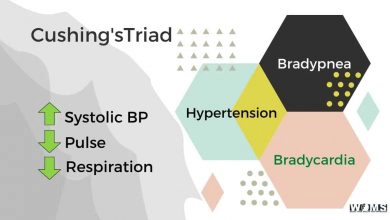What is diabetes?
overview I Types I Difference between type-1 and type-2 DM I Causes I Complications I preventions

Diabetes mellitus is a clinical syndrome characterized by persistent hyperglycemia due to an absolute or relative deficiency of insulin. Diabetes mellitus is commonly known as diabetes. The term “diabetes” means excessive urination and the term “Mellitus” means honey. According to WHO diabetes mellitus is a chronic disease caused by inherited and/ or acquired deficiency in the production of insulin by the pancreas, or by the ineffectiveness of the insulin produced. Such deficiency result increase concentration of the glucose in the blood, which in turn damage/dysfunction the many systems in the body, particularly blood vessels and nerves.
Insulin is the hormone secreted by the pancreas that allows your body to use sugar(glucose) from the carbohydrate in the food that you eat for the energy or to store the glucose for further use. It helps to keep blood sugar from getting
In diabetes, pancreas
Types of Diabetes Mellitus (etiological classification):
Type-1 DM or insulin dependent DM (IDDM)
It is due to
- Idiopathic cause
- Destruction of pancreatic β-cells by immunological assault.
Type-2 DM or Non-insulin dependent DM (NIDDM):
It is due to
- Insulin resistance (IR)
- IR is the consequences of obesity/overweight or insulin receptor defect.
- Desensitization of β-cell to glucose.
Secondary diabetes mellitus
It is caused by
- Endocrinopathies,e.g. acromegaly, Cushing’s syndrome, pheochromocytoma, glucagonoma, hyperthyroidism, etc.
- Pancreatic disease, e.g. pancreatitis, hemochromatosis, cystic fibrosis, neoplasm, etc.
- Chronic liver disease (CLD), e.g. liver cirrhosis.
- Drug abuse, eg. Cortisol, oral contraceptives etc.
Gestational diabetes mellitus (GDM)
It is the condition characterized by hyperglycemia developed the first time during pregnancy in a woman who had no DM before pregnancy.
The difference between Type-1 and Type-2 diabetes mellitus
| points | Type-1 DM (IDDM) | Type-2 DM (NIDDM) |
| age of onset | Before 35 years (Juvenile onset DM) | after 35 years (maturity onset of DM) |
| Defect | β-cells destruction | β-cells dysfunctions |
| Insulin status | absolute deficiency ( β-cells loss) | inadequate insulin ( β-cells dysfunctions) |
| insulin sensitivity | Normal | Decreased |
| Plasma insulin | low or nil | normal or high |
| islets cell auto antibody | positive | Negative |
| genetic predisposition | Moderate | strong |
| nutritional status | frequently undernourished | frequently overweight and obese |
| ketosis | common | rare |
| prevalance | 10-20% of diabetic patients | 80-90% of diabetic patient |
Symptoms
The symptoms of diabetes vary from how much your blood sugar is elevated. Some people, especially those with pre-diabetes or type-2 diabetes, may not experience symptoms initially. In type-1 diabetes, Mellitus symptom tends to come earlier and more severe.
Some sign and symptoms of type-1 and type-2 diabetes are:
- Increases thrust
- Frequent urination
- Extreme hunger
- Unexplained weight loss
- Fatigue
- Irritability
- Blurred vision
- Slow-healing sores
- Frequent infections such as gum or skin infections and vaginal infections
Risk factors
The risk factor of diabetes mainly depends upon the type of diabetes.
The risk factor of type-1 diabetes mellitus
Although the exact cause of diabetes is unknown, a factor that may call as an increased risk include:
- Family history
- Environmental factors
- The presence of damaging immune system cells (autoantibodies)
- Geography
Risk factors for prediabetes and Type-2 diabetes are:
- Weight
- Inactivity
- Family history
- Race
- Age
- Gestational diabetes
- Polycystic ovary syndrome
- High blood pressure
- Abnormal cholesterol and triglyceride level
Risk factor for gestational diabetes
- Age
- Family or personal history
- Weight
- Race
Complications
Long term complication of diabetes mellitus develops gradually. The longer you have diabetes, the less you control your blood sugar—there is a higher risk of complications. Eventually, the complication may be disabling or life-threatening. Possible complications are:
Cardiovascular disease: Diabetes variously increases of cardiovascular diseases like coronary arteries disease with chest pain (angina), heart attack, stroke and narrowing of arteries (atherosclerosis).
Nerve damage (neuropathy): excessive sugar can damage the small blood vessels, that nourish the nerves, especially nerves of the legs. This can cause tingling, numbness, burning sensation or pain that starts from a tip of toe or fingers and gradually spreads upward.
Kidney damage (nephropathy): diabetes can damage the filtering system of the kidney. Severe damage can lead to kidney failure or irreversible stage of the kidney function, which may require dialysis or kidney transplantation.
Eye damage (retinopathy): diabetes can damage the blood vessels of the retina, potentially leading to blindness. Diabetes also increases the serious risk of eyes like cataract and glaucoma.
Foot damage: The nerve damage of feet or poor blood supplies to feet cause various complication. Mainly it is called a diabetic foot. The untreated, cuts and blister can develop serious infections which often heal poorly. The infection ultimately required toe, foot or leg amputation.
Skin condition: diabetic may lead you susceptible to skin problems including bacterial and fungal infections.
Hearing impairment: hearing problems are more common in the diabetic patient.
Alzheimer’s disease: type-2 diabetes may increase the risk of dementia., such as Alzheimers’ disease.
Depression: Depression symptoms are common in type-1 and type-2 diabetic people which can affect diabetes management.
Complication of gestational diabetes
Most women who have gestational diabetes deliver a healthy baby. However, untreated or uncontrolled blood sugar a causes problem to baby and mother.
Complications of baby
- Excess growth
- Low blood sugar
- Type-2 diabetes later in life
- Death
Complication in mother
- Preeclampsia
- Subsequent gestational diabetes
Preventions
Type-1 diabetes can’t be prevented. However, the same healthy lifestyle choices help treat prediabetes and type-2 diabetes, whereas gestational diabetes can be also prevented.
Eat healthy food: Have a lower fat and calorie diet and also high dietary fiber. Have focused on fruits, vegetables, and whole grains.
Get more physical activities: Aim to have at least 30 minutes of moderate physical activities in a day. Take a walk daily.
Lose body weight: losing weight can prevent you from diabetes. If you are pregnant don’t try to lose weight. However, talk to your doctor and ask how much weight favorable for your pregnancy.
Sometimes medication is optional as well as. Oral diabetic drugs such as metformin may reduce the risk of type-2 diabetes but healthy lifestyle choice is much more essential. Have your blood sugar checked at least once a year if possible in six months




